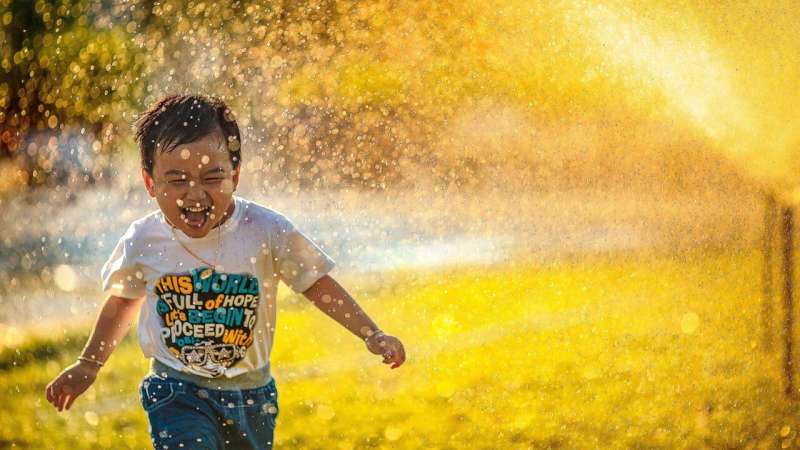
“Go outside and play” is the time-tested strategy for generations of parents and caregivers ready to see their little ones tuckered out by exercise. But the strategy may be losing some of its impact as more children face more hot days, according to new research from The University of Texas at Austin. A team found that, as the weather gets hotter, preschool-aged children become more sedentary.
The findings, published last week in the JAMA Pediatrics, may seem obvious to anyone who’s watched their little ones wilt and turn red-faced on the playground. But researchers approached the question in a novel way: they used advanced wearable activity monitors to follow specific children in a specially designed laboratory school for studying child behavior and development.
“Given that we’re seeing an increasing number of hot days,” said Andrew Koepp, lead author of the paper and Ph.D. candidate in human development and family sciences at UT Austin, “it’s important to understand how young children’s activity changes so that we can take steps to make sure they are getting the physical activity they need to be healthy.”
The study looked at children ages three to six who are enrolled at the Priscilla Pond Flawn Child and Family Laboratory School on the campus of UT Austin. The study used digital wearable activity monitors on each child for a week in April 2022 as the children played on the school’s partially shaded playground. Ambient air temperatures were between 72 degrees and 95 degrees Fahrenheit.
When temperatures were at 72 degrees, children engaged in moderate to vigorous physical activity (MVPA) for 27% of their outdoor play time. MVPA is defined as raising the heart rate to the point where a person can speak, but would have a hard time singing. When temperatures rose to 95 degrees, MVPA dropped to 21% of outdoor play time. Additionally, sedentary time, where children were sitting or still, rose on hotter days from 62% on play time at 72 degrees to 70% of playtime at 95 degrees.
The Centers for Disease Control recommends that children between the ages of three and five be physically active throughout the day, as physical activity improves young children’s development, academic performance and learning and helps build strong muscles and bones, contributes to healthy weight and blood sugar levels and improves cardiovascular, lung and mental health.
The sample at the laboratory school is made up of healthy, middle- and upper-income children, but, as laboratory school director Amy Bryan, an associate professor of practice in human development and family sciences, explained, “These effects would likely be amplified in more vulnerable children who had health issues or other risk factors for low activity, as would the impacts on their development.”
Indoor play is not a reasonable substitute for outdoor play, said Liz Gershoff, a professor of human development and family sciences, noted child development researcher and an author on the paper.
“Other research by our team has shown that children are much more physically active outside than inside,” Gershoff noted. “This is likely in large part because classrooms have more expectations about behavior indoors than outdoors. There may be some indoor and air-conditioned settings that are conducive to physical activity, such as indoor gyms and play places, but those may not be available in all areas.”
Because young children may be less aware of things such as the need to slow down and drink water, heat can be especially dangerous for them. Adults monitor children for signs of distress and take steps to keep kids safe.
Playgrounds may also have to change, Koepp said, by adding more features like shade sails, heat reducing materials, fans, misters and water play areas. Play times may also have to move to earlier in the morning when it’s cooler.
“A lot of policies are focused on stopping climate change, but in many ways, it’s already here,” said Koepp. “We need to start looking at policies, practices and recommendations that recognize that, if we’re going to limit the impacts on the next generation.”
More information:
Andrew E. Koepp et al, Ambient Temperature Increases and Preschoolers’ Outdoor Physical Activity, JAMA Pediatrics (2023). DOI: 10.1001/jamapediatrics.2023.0067
Journal information:
JAMA Pediatrics
Source: Read Full Article
